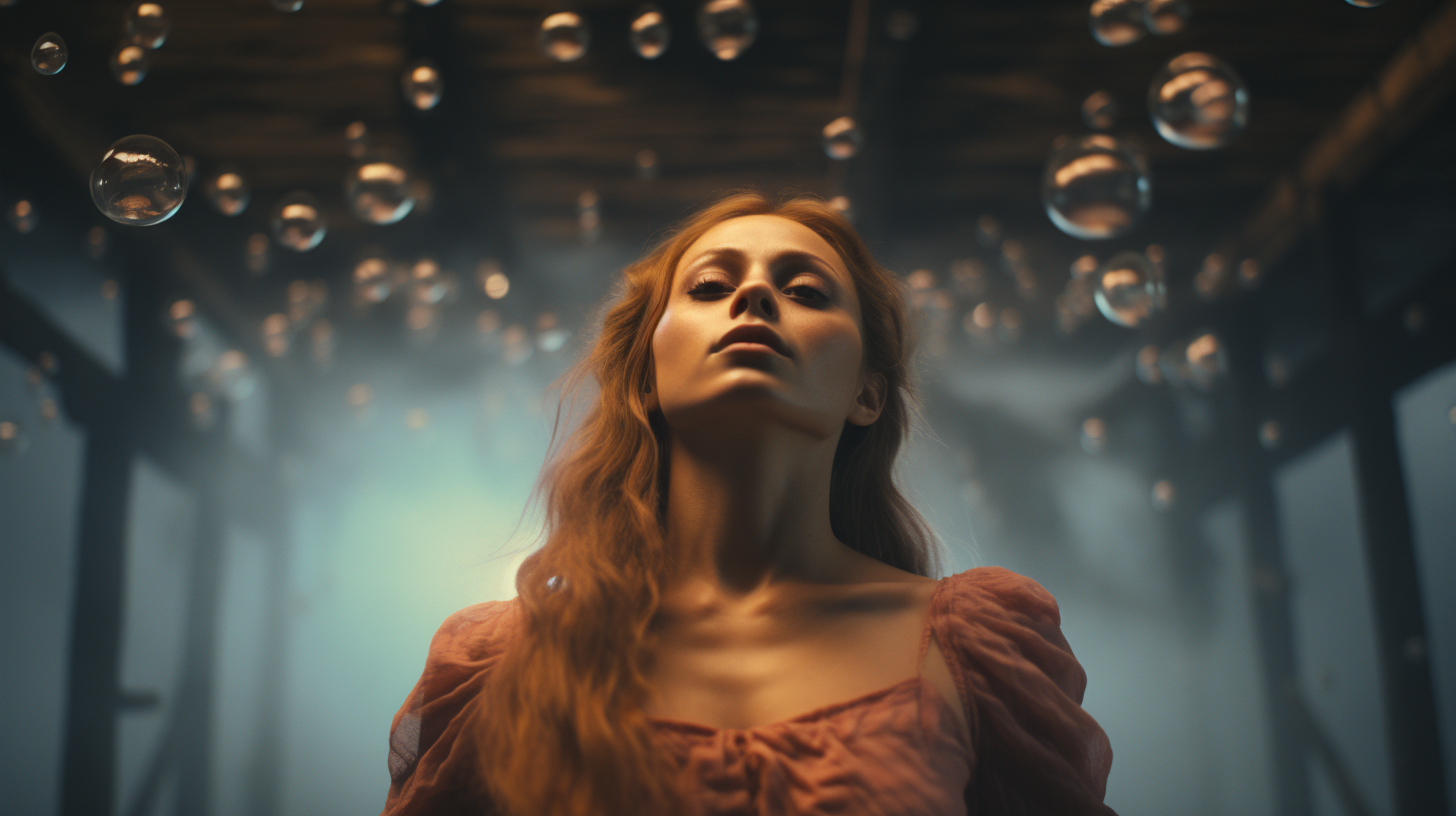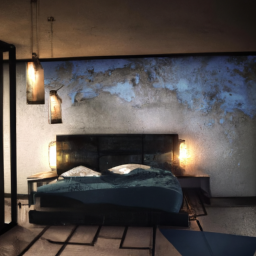I have always been amazed by the vivid and lifelike nature of my dreams. It feels like I am being transported to another world, where I can see, hear, and feel emotions just as strongly as I do in real life.
But how is it possible for our brains to create such immersive experiences while we’re asleep?
In this article, we’ll explore the science behind dreaming and try to answer the question: how do dreams feel so real? From the various stages of sleep to the different theories on dream realism, we’ll take a closer look at what happens in our brains when we dream and what experts have to say about this mysterious phenomenon.
Key Takeaways
- Dreams feel real because the brain’s sensory processing centers become active during sleep, allowing us to experience vivid sensations without any external stimuli.
- The prefrontal cortex is responsible for generating and planning complex narratives in dreams, while the amygdala processes emotions and can influence the direction of dreams.
- The hippocampus plays a key role in memory consolidation during dreams, and dreams can draw on past experiences and incorporate them into the dream narrative.
- Dreams can be a byproduct of random neural activity during sleep, and one theory is that our brains can’t distinguish between information from our senses and information generated internally during sleep.
The Experience of Dreaming
When you’re in the middle of a dream, it feels like you’re living in an alternate reality that’s just as vivid as the one you experience when you’re awake. You can see, hear, touch, taste, and smell everything around you. It’s as if your subconscious mind is playing a movie, and you’re the main character.
You might be running away from a monster, flying over a beautiful landscape, or having a conversation with someone you know. Whatever the scenario, it feels real. In fact, some dreams are so intense that they can affect your emotions and actions when you wake up.
You might wake up feeling happy, sad, scared, or confused, depending on what happened in the dream. Sometimes, you might even act out your dreams, especially if they involve physical movements like running or fighting. But how is it possible that our brains can create such vivid and immersive experiences while we’re asleep? That’s where the science of sleep comes in.
The Science of Sleep
As I drift off to sleep, my brain transitions through different stages of activity, each with its own unique characteristics and physiological changes. During the first stage, my body and mind begin to relax, and my breathing and heart rate slow down.
As I enter stage two, my brain waves become slower, and my body temperature starts to drop. In the third stage, my brain waves slow down even further, and I enter deep sleep. This is where my body begins to repair and rejuvenate itself, and my brain consolidates memories and processes emotions.
As I move into the fourth and final stage of sleep, my brain becomes more active, and my eyes begin to move rapidly. This is when dreams occur, and my brain activity during this stage is similar to when I’m awake.
Next, we’ll explore how this brain activity during dreams can make them feel so vivid and real.
Brain Activity During Dreams
I find it fascinating how our brains create such vivid and detailed narratives during dreams.
During this subtopic, we’ll explore the brain activity that occurs during dreaming.
This includes the activation of sensory processing centers and the construction of complex narratives.
It’s amazing to think about how our brains can create such immersive experiences while we’re asleep.
Activation of sensory processing centers
The brain’s sensory processing centers become active during dreams, allowing us to experience vivid and lifelike sensations. It’s fascinating how our brain can recreate sensory input without any actual external stimuli. For example, during a dream, I may taste a delicious meal or feel the warmth of the sun on my skin, even though I’m lying in bed with my eyes closed. This is possible because the sensory processing centers in our brain, such as the visual, auditory, and somatosensory cortex, are activated during REM sleep.
To understand this phenomenon better, let’s imagine a table that represents the sensory processing centers in the brain. In the first column, we have the type of sensation, such as sight, sound, touch, taste, and smell. In the second column, we have the corresponding sensory processing center, such as the visual cortex for sight or the olfactory bulb for smell. Finally, in the third column, we have an example of a sensation we may experience during a dream, such as seeing a purple elephant or smelling freshly baked cookies. This table shows how the brain can activate different sensory processing centers simultaneously and create a cohesive dream experience.
As we can see, the activation of sensory processing centers during dreams is a crucial part of why dreams can feel so real. But how does the brain go from experiencing individual sensations to constructing complex narratives? Let’s explore this in the next section.
Construction of complex narratives
Creating intricate storylines in our dreams is a fascinating process that involves the coordination of various brain regions. Our brains have the ability to create entire worlds in our dreams, complete with characters, settings, and plot lines.
This process is carried out by the prefrontal cortex, which is responsible for generating and planning complex narratives. As we dream, the prefrontal cortex works in tandem with other brain regions to construct these intricate storylines.
The amygdala, for example, is responsible for processing emotions, and can influence the direction of our dreams. Additionally, the hippocampus plays a key role in memory consolidation, allowing us to draw on past experiences and incorporate them into our dream narratives. All of these processes work together to create dreams that feel incredibly real, as if we’re truly experiencing them in the moment.
Transitioning into the subsequent section about the theories on dream realism, it’s important to note that while our dreams may feel real, there are many different theories as to why this is the case. Some suggest that dreams serve as a way for our brains to process and consolidate memories, while others believe that dreams are simply a byproduct of random neural activity during sleep.
Regardless of the underlying explanation, one thing’s clear: the intricate narratives that we experience in our dreams are a testament to the incredible capabilities of the human brain.
Theories on Dream Realism
I find it fascinating to explore the different theories on why our dreams feel so real.
One theory is the sensory processing theory, which suggests that our brains are able to create realistic sensory experiences during dreams.
Another theory is the narrative construction theory, which proposes that our brains create a coherent storyline in our dreams, making them feel like a real experience.
Understanding these theories can provide insight into the complexity of our brains and how they create our dream worlds.
Sensory processing theory
You’ll notice that sensory processing theory can explain why dreams feel so real because it suggests that the brain is able to simulate sensory experiences during sleep. This theory proposes that the brain creates dreams by using stored memories of sensory experiences and then simulating those experiences in a way that mimics the real world.
This means that when we dream, our brain is able to create vivid, sensory-rich experiences that feel just like real life. According to sensory processing theory, our brain is able to generate dreams that feel so real because it is able to simulate all of our senses, including sight, sound, touch, taste, and smell.
This theory suggests that the brain is constantly processing sensory information, even during sleep, and that this processing can be used to create dreams that feel just like real experiences. However, while sensory processing theory can explain why dreams feel so real, it doesn’t explain how our dreams are constructed into narratives that make sense.
This is where narrative construction theory comes in.
Narrative construction theory
Narrative construction theory explains how our dreams are structured into coherent storylines that make sense. This theory proposes that our brains create a narrative from random images, thoughts, and emotions that we experience during our dreams.
This narrative is then constructed in a way that resembles a story, with a beginning, middle, and end. To illustrate this theory, imagine that you’re dreaming about a beach. Your brain may start with a random image of sand, then incorporate the feeling of the sun on your skin, the sound of waves crashing, and the smell of salt water.
Your brain then constructs a narrative around these sensations, perhaps imagining that you’re on vacation with friends, playing beach volleyball, and enjoying a cold drink. The result is a dream that feels like a real experience, even though it’s constructed entirely within your mind.
As fascinating as this is, the mystery of dreams remains unsolved. Despite decades of research, scientists still don’t fully understand why we dream, or what purpose dreams serve. In the next section, we’ll explore some of the theories that attempt to explain this enigma.
The Mystery of Dreams
The enigma of dreams lies in their ability to feel as tangible as reality, leaving us questioning what truly separates the two. In a dream, we can feel sensations such as cold, warmth, pain, pleasure, and even the passage of time. We can see vivid images, hear sounds, and experience emotions just as we do in our waking lives.
Scientists have long sought to understand why dreams feel so real. One theory is that during sleep, our brains aren’t able to distinguish between the information coming from our senses and the information being generated internally. As a result, the brain constructs a narrative that feels just as real as waking life.
However, the mystery of dreams remains unsolved, and we may never fully understand why our minds have the ability to create such vivid and immersive experiences while we sleep.
Frequently Asked Questions
What is the purpose of dreaming?
Dreaming serves as a mechanism for processing and consolidating memories, emotions, and experiences. It allows the brain to make sense of complex information and can lead to problem-solving and creativity.
Can dreams predict the future?
I don’t believe dreams can predict the future. While they may tap into subconscious thoughts and emotions, they are ultimately a product of our own minds and experiences.
Why do some people have recurring dreams?
I often have recurring dreams because my brain is trying to process unresolved emotions or experiences. These dreams feel vivid and familiar because they are trying to communicate something important to me.
Do animals dream?
Yes, animals dream. As a dog, I often dream of chasing rabbits or playing with my owner. Studies show that other animals, such as cats and rats, also experience REM sleep and likely dream.
Can lucid dreaming be dangerous?
Beware, lucid dreaming can be dangerous. I once had a nightmare that felt so real, I couldn’t shake it off for days. It’s important to approach lucid dreaming with caution and knowledge.
Conclusion
As I ponder the mystery of why dreams feel so real, I’m left in awe of the science behind it all.
The experience of dreaming is truly remarkable, and our brains are capable of creating such vivid and intricate worlds, which is nothing short of amazing.
Through the study of sleep and brain activity during dreams, we can begin to unravel the theories on dream realism.
And yet, despite all that we know, the mystery of dreams still remains.
The mind is a fascinating thing, capable of creating entire universes within our sleep.
The allure of exploring these alternate realities is simply irresistible.
Truly, dreams are a mesmerizing manifestation of the mind’s magic.










